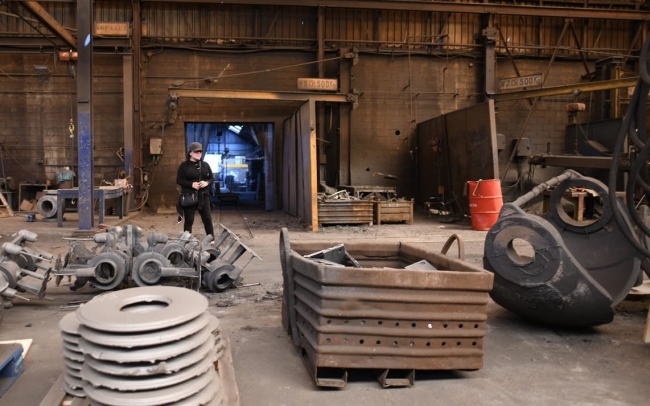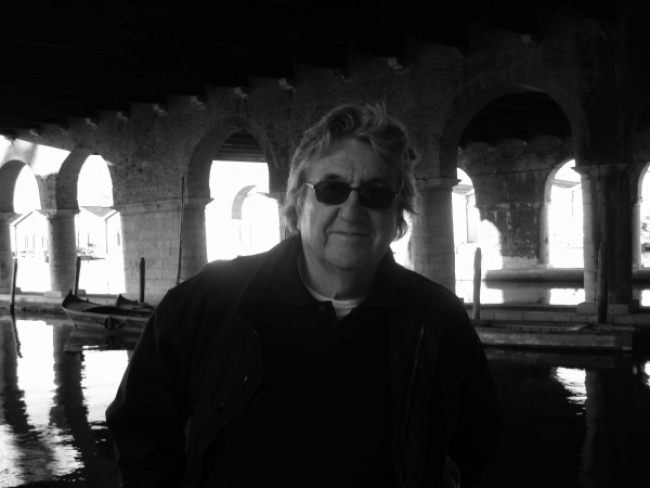Galerías y otras organizaciones que le representan
Organizaciones con obra
Profesionales con obra
Descripción del Artista
Mariana Castillo Deball (1975, México). Vive y trabaja en Berlín.
Mariana Castillo Deball trabaja con instalaciones, esculturas, fotografías y dibujos, con los que explora el papel que los objetos juegan en nuestro entendimiento de la identidad y la historia. Toma una aproximación caleidoscópica, comunicando varias disciplinas para crear imágenes relevantes que surgen a partir de la colisión y combinación de estos diferentes lenguajes. Por ejemplo, el interés de Deball por las leyes matemáticas y las estructuras geométricas que rigen el mundo natural han contribuido a una serie de obras donde elementos científicos y naturales se sintetizan en objetos escultóricos. Su trabajo también destaca por la colaboración e investigación con instituciones y museos. Deball traza su camino a través de campos como la arqueología, la ciencia y la literatura, y entabla un intercambio de conocimiento como un proceso que implica la transformación en ambos lados. Para cada proyecto produce múltiples libros y objetos que funcionan como dispositivos performáticos con distintos usos y formatos, explorando la manera en que estos objetos pueden generar sus propios territorios.
Mariana Castillo Deball obtuvo el grado de maestra en Artes Plásticas de la Universidad Nacional Autónoma de México UNAM, en 1997, en la ciudad de México. En 2003 concluyó un programa de posgrado en Jan Van Eyck Academie, en Maastricht, Países Bajos. Deball fue reconocida con el Prix de Rome, en Ámsterdam (2004); el Zurich Art Prize (2012); Henry Moore Fellowship (2012); y el Preis der Nationalgalerie für Junge Kunst, Hamburger Bahnhof, Berlín, Alemania (2013). Completó la residencia Deutscher Akademischer Austausch Dienst, durante el 2011, en Berlín, Alemania.
Entre sus exposiciones más importantes destacan: Mariana Castillo Deball, Kunsthalle Lissabon, en Lisboa, Portugal (2014); Mariana Castillo Deball, Parergon, Hamburger Bahnhof, en Berlín, Alemania (2014); What we caught we threw away, what we didn’t catch we kept, CCA Glasgow, Escocia (2013); Uncomfortables Objects, Zurich Art Prize, Museum Haus Konstruktiv, Zúrich, Suiza (2012); Este desorden construido, autoriza geológicas sorpresas a la memoria más abandonada, Museo Experimental El Eco, en la Ciudad de México (2011); Between you and the image of you that reaches me, Museum of Latin American Art, Long Beach, Estados Unidos (2010); Kaleidoscopic Eye, Kunst Halle Sankt Gallen, en San Galo, Suiza (2009); Estas Ruinas que ves, Museo de Arte Contemporáneo Carrillo Gil, en la Ciudad de México (2006); Institute of Chance, Stedelijk Museum (Prix de Rome), en Ámsterdam, Países Bajos (2004); Interlude: The reader’s traces, intervención en la Biblioteca Nacional de París, la Biblioteca Pública de Nueva York y la Biblioteca Nacional de Berlín (2003). Además, su trabajo se ha presentado en exposiciones grupales y con instituciones como el Guggenheim Museum, en Nueva York, Estados Unidos (2014); Hamburger Bahnhof, en Berlín, Alemania (2013); Museum of Modern Art MoMA, en Nueva York, Estados Unidos (2012); Museo Rufino Tamayo, en la Ciudad de México (2012); Musée d’Art Moderne de la Ville de Paris, en París, Francia (2012); dOCUMENTA (13), en Kassel, Alemania (2012); Centre Georges Pompidou, en París, Francia (2011); Institute of Contemporary Art, en Londres, Reino Unido (2010); Macba, en Barcelona, España (2009); De Appel, en Ámsterdam, Países Bajos (2008); Stedelijk Museum, en Ámsterdam, Países Bajos (2006); entre otros.
Ha participado en varias bienales como la 8ª Bienal de Berlín para Arte Contemporáneo, Alemania (2014); la 54ª Bienal de Venecia, en Italia (2011); y la segunda Bienal de Atenas, en Grecia (2009).
-------------------------------------------------------------
Mariana Castillo Deball takes a kaleidoscopic approach to her practice, mediating between science, archaeology, and the visual arts and exploring the way in which these disciplines describe the world. Her installations, performances, sculptures, and editorial projects arise from the recombination of different languages that seek to understand the role objects play in our identity and history. Her works result from a long research process, allowing her to study the different ways in which a historical object can be read as it presents a version of reality that informs and blends into a polyphonic panorama. Seeking to initiate a dialogue with institutions and museums beyond contemporary art, she collaborates with ethnographic collections, libraries, and historical archives. She often produces multiples —books or objects with different uses and formats— to explore how they might generate new territories. Weaving her way through the fields of anthropology, philosophy, and literature, Castillo Deball draws inspiration from a wide range of sources as she engages in the exchange of knowledge as a transforming process for everyone involved.
Mariana Castillo Deball (1975) lives and works in Berlin.
Earned a BFA from the Universidad Nacional Autónoma de México in 1997. In 2003, she completed a postgraduate program at Jan van Eyck Academie in the Netherlands. Deball has been awarded with the Prix de Rome (2004), Zurich Art Prize (2012), a fellowship at the Henry Moore Institute (2012), and the Preis der Nationalgalerie für junge Kunst (2013). She was an artist in residency at the Berliner Künstlerprogramm in Deutscher Akademischer Austauschdienst (DAAD) in 2011.
Her solo exhibitions include: To-Day, February 20th, Savannah College of Art and Design (SCAD) Museum of Art, United States (2018); Pleasures of association, and poissons, such as love, Galerie Wedding – Raum für zeitgenössische Kunst, Berlin (2017); Feathered Changes, Serpent Disappearances, Walter and McBean Galleries, San Francisco Art Institute, United States (2016); ¿Quién medirá el espacio, quién me dirá el momento? MACO Museo de Arte Contemporáneo de Oaxaca, Mexico (2015); Mariana Castillo Deball, Kunsthalle Lissabon, Lisbon, Portugal (2014); Mariana Castillo Deball, Parergon, Hamburger Bahnhof – Museum für Gegenwart, Berlin (2014); “What we caught we threw away, what we didn’t catch we kept”, CCA: Centre for Contemporary Arts, Glasgow, Scotland (2013); Zurich Art Prize: Uncomfortable Objects, Haus Konstruktiv, Zurich, Switzerland (2012); Este desorden construido, autoriza geológicas sorpresas a la memoria más abandonada, Museo Experimental El Eco, Mexico City (2011); Between You and the Image of You That Reaches Me, Museum of Latin American Art (MOLAA), Long Beach, United States (2010); Kaleidoscopic Eye, Kunst Halle Sankt Gallen, Switzerland (2009); Estas ruinas que ves, Museo de Arte Carrillo Gil, Mexico City (2006); Prix de Rome: Institute of Chance, Stedelijk Museum Amsterdam (2004); among others.
Additionally, her work has been included in group exhibitions such as: Hello World. Revision einer Sammlung, Hamburger Bahnhof – Museum für Gegenwart, Berlin (2018); Statues Also Die: Contemporary reflections on heritage and conflict in the Middle-East, Fondazione Sandretto Re Rebaudengo, Turin, Italy (2018); Lecturas de un territorio fracturado, Museo Amparo, Puebla, Mexico (2017); Alors que j'écoutais moi aussi David, Eleanor, Mariana, etc. La Criée centre d’art contemporain, Rennes, France (2017); El orden Natural de las Cosas, Museo Jumex, Mexico City (2016); Ce qui ne sert pas s’oublie, CAPC musée d'art contemporain de Bordeaux, France (2015); Storylines: Contemporary Art at the Guggenheim Museum, New York (2014); Arqueológicas, Matadero Centro de Creación Contemporánea, Madrid (2013); Resisting the Present, Musée d’Art moderne de la Ville de Paris (2012); Æther – Une proposition de Christoph Keller, Centre Georges Pompidou, Paris (2011); For the blind man in the dark room looking for the black cat that isn’t there, Institute of Contemporary Arts (ICA), London (2010); The Malady of Writing, Museu d’Art Contemporani de Barcelona (MACBA), Spain (2009), among others.
She has participated in biennales such as: Sharjah Biennial 13, Tamawuj, United Arab Emirates (2017); Documenta 14, Athens (2017); 8 Berlin Biennale (2014); dOCUMENTA (13), Kassel, Germany (2012); 54th Venice Biennial (2011); AB2 HEAVEN 2nd Athens Biennale (2009); Manifesta 7, Trentino – Alto Adige, Italy (2008); 7th Shanghai Biennale, China (2008), among others.
Artistas similares

Arte en Datos, 17 dic de 2019
Lxs 10 artistas mexicanxs con mejor Índice de Notoriedad 2019
Por GUSTAVO PéREZ DIEZ
6 hombres y 4 mujeres artistas que son figuras importantes en la escena artística mexicana e internacional y que trabajan en diferentes medios como vídeo, instalación, escultura y fotografía.

Grandes Eventos, 12 jun de 2018
12 artistas iberoamericanos en Art Basel 2018 "muy bien coleccionados"
Por GUSTAVO PéREZ DIEZ
Son artistas consagrados y de media carrera (seis mujeres y seis hombres) con obras en las principales colecciones de ámbito iberoamericano e internacional.

Arte en Datos, 20 jun de 2016
Los 10 artistas mexicanos con mayor presencia internacional
Por ARTEINFORMADO
Rafael Lozano-Hemmer, Bosco Sodi y Damián Ortega forman el trío de cabeza.

Exposición. 11 abr de 2025 - 28 sep de 2025 / Museo Guggenheim Bilbao / Bilbao, Vizcaya, España

Formación. 08 may de 2025 - 17 may de 2025 / Museo Nacional Centro de Arte Reina Sofía (MNCARS) / Madrid, España